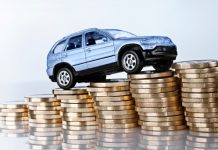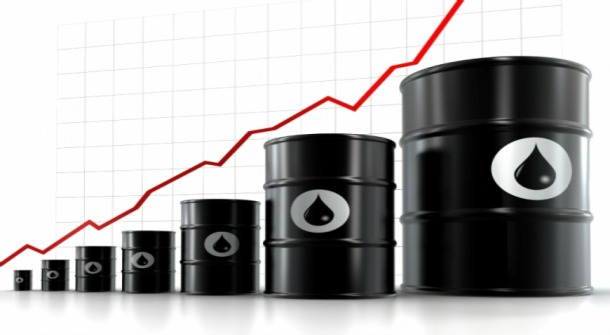Here’s the latest reader question, along with my reply!
Culley asks: If a pick-up is traveling at 60mph and all eight cylinders are running, then the amount of energy required to maintain the 60mph is the amount of energy being used, right? If you cut back to four cylinders running how does that magically make it to were the pick up now requires less energy to maintain 60mph? If the eight cylinders were wasting energy where was that energy going, was the torque converter loosing efficiency? If the eight cylinders were using more energy than necessary, then doesn’t it stand to reason that the truck would not maintain 60mph but would instead be speeding up?
My reply: This requires some parsing. If an engine is equipped with cylinder deactivation (also called variable displacement; e.g., V8/6/4) all of the pistons are still going up and down inside the cylinders because it’s not physically possible to disconnect them from the crankshaft. All that’s happened is fuel delivery to some of the cylinders has been turned off during low-load/coasting and steady-state cruising.
The pistons pump air – and do not fire. Because the injectors aren’t spraying any fuel into those “shut down” cylinders. It doesn’t take much energy to keep a vehicle rolling once it’s rolling.
This is how fuel is saved.
It’s not much – from the perspective of the vehicle’s owner. Typically 1-3 MPG, best case.
It’d never be worth the cost/complexity were it not for CAFE – Corporate Average Fuel Economy – the mandatory fleet averages each automaker must meet else be fined, these fines adding to the cost of the “non-compliant” cars and thereby making them less attractive to buyers.
A 1-3 MPG improvement per vehicle factored over a fleet of vehicles – all the models of that type sold in a year – is a very big deal to the car company, which is why these systems are common. Also automated stop/start – ASS – and direct injection.
Uncle fatwas – we pay.
How much is “saving gas” worth to you?
…
Got a question about cars – or anything else? Click on the “ask Eric” link and send ’em in!
If you like what you’ve found here please consider supporting EPautos.
We depend on you to keep the wheels turning!
Our donate button is here.
If you prefer not to use PayPal, our mailing address is:
EPautos
721 Hummingbird Lane SE
Copper Hill, VA 24079
PS: Get an EPautos magnet (pictured below) in return for a $20 or more one-time donation or a $10 or more monthly recurring donation. (Please be sure to tell us you want a sticker – and also, provide an address, so we know where to mail the thing!)
My latest eBook is also available for your favorite price – free! Click here. 












I asked a physicist:
Some cars are equipped with Dynamic Fuel Management systems which, at low demand times, shut down some of the combustion chambers in an attempt to get better gas mileage. If a car needs say 30 horse power to maintain 60mph how can running 4 cylinders improve fuel millage? The 4 cylinders must produce 30 horse power. If 8 cylinders are producing 30 horse power the car will be maintaining 60mph. If 8 cylinders are using more energy than required the car would by accelerating, right? Where does the wasted energy of the 8 go, the car weighs the same, wind resistance is the same, the transmission’s efficiency doesn’t change. We are told these systems improve millage, I can not figure out how. Can you please explain where the error lies, do I not understand something or are these systems a hoax?
Thanks
Culley Grace
Dr. Christopher S. Baird
Thu, May 30, 3:18 PM (4 days ago)
You have to realize that not all the energy from the fuel ends up delivered to the wheels or the alternator. A lot of energy is wasted in the engine as heat. That is in fact what efficiency means: it is a measurement of how much initial energy ends up as useful energy. A 100% efficient engine turns all the input energy in the fuel into useful output energy in the form of motion. A 50% efficient car is only able to usefully apply half of the energy in the fuel. The way in which energy is wasted is not linear. As a side note, that is the whole point of gear settings. Gears don’t magically make energy appear. They just keep an engine running at the rate at which the engine is most efficient, no matter what rate the wheels need to be spinning at, in order to minimize wasted energy. Dynamic Skip Fire or Dynamic Fuel Management also tries to keep the engine running in its optimal configuration. It’s not a hoax.
The more cylinders there are that are firing in an engine, the less efficient the engine is because there are more moving parts and more locations where friction happens. I mean that the percentage of useful energy exiting the engine relative to the energy entering the engine goes down the more cylinders you have running. Because its a percentage, the total amount of fuel consumed has been divided out. In other words, 4 cylinders each burning 1 gallon of gas does not output the same amount of useful energy as 2 cylinders each burning 2 gallons of gas, even in the exact same car under the exact same situations. In both cases, 4 gallons of gas got used up by the engine, but in the case using more cylinders, there were more parts experiencing more friction and so more energy became waste heat and less energy became forward motion of the car. In general, using more cylinders to burn the same amount of gas leads to less useful energy outputted, i.e. lower efficiency.
This leads to another question. If it’s always more efficient to have fewer cylinders running in an engine, why aren’t all engines built with just one or two cylinders? The answer is that a car needs more than fuel efficiency to function well. It also needs high power (which is the rate at energy is delivered). High power is needed to accelerate at a decent rate, and more cylinders gives more power. Every engine could theoretically run on two cylinders, but we would then have to live with it taking a long time for the vehicle to get up speed. The more mass a vehicle has, the larger the force required to give it a decent acceleration, and therefore the more power that has to be provided by the engine. For large trucks, more cylinders are important so that it does not take several minutes or hours for the truck to leave a parking spot and get on the road. Once a vehicle reaches a cruising speed that it will stay at, less power is needed (the only power needed when traveling on flat ground at constant speed is the power used to overcome air resistance and friction), and so all the cylinders don’t need to be running. Some cylinders can then turn off to boost efficiency.
– Dr. Baird
Culley’s thoughts;
Friction has not been reduce all the parts are still moving. What has happened is there is less energy used to heat up the top of the piston and inside of the head in those chambers that are not in use. Best I can figure that is all the energy saved.
It would make more sense to have two engines in tandem with some sort of clutch between them.
My mind went the same direction and a little farther. Two engines side by side bolted to a transmission with two torque converters (I know very little about transmissions). The two engines sharing cooling and lube systems so when the sleeping engine is ask to wake it is already at temperature and oil pressure.
Thank you for your response but I still don’t understand how running four cylinders can save fuel. The amount of energy needed is the same if running four or eight. I’m thinking that if you were to run two identical pick ups side by side both using cruise control, one using the DFM system the other having the system disabled they require the same amount of energy/gas. I can’t get my brain to understand anything different, the trucks weigh the same, tire/road friction is the same, wind resistance is the same, therefor the energy needed is the same. I guess what I’m asking is where does the wasted energy go when running all eight? When the eight cylinder truck gets to 60 mph the driver or the cruise control backs off the foot feed enough to save the energy. When the four cylinder engine is ask to push that truck at 60 mph the driver or the cruse control will have to increase the amount of fuel going to the four cylinders, or it is done automatically via the DFM. There is no way to propel the truck at the same speed using less energy, or at least I need some one to explain what I’m not seeing or understanding.
Hi Culley,
It takes very little power to maintain say 60 MPH on a flat road; as little as 30 or so horsepower. The slight economy gain is from shutting down injectors; no fuel sprayed (vs. a little fuel sprayed) into four of a V8’s cylinders equals a slight decrease in overall consumption.
It’s just a CAFE compliance dodge; like the skip shift feature some GM cars had – and like ASS.
Pumping losses are reduced with cylinder deactivation. I don’t know if that translates into any noticeable real-world savings. Probably just another small increment towards meeting the CAFE gang rules.
I think these systems open the valves early to avoid compressing air with no fuel. This is where the system has early failures. It’s sorta the reverse of a Jake Brake but not reliable.
Speaking of Jake Brakes, if everyone is so preoccupied with brake dust and such, why not build engine with a Jake Brake? That V8 that can use the compression cycle with no fuel would negate the need for brakes a lot of the time. In big rigs where diesels are specifically made for the Jake Brake(the engine brake hasn’t been an add-on for decades now), they are capable of producing 135% of the engine horsepower in braking. That ain’t just chicken feed.
eric, I’ve seen a few videos of people having problems, often fairly severe, with GM pickups due to cylinder deactivation. In every “fix” the system was deleted and real world mpg actually improved.
I’d reckon a person would have to do a lot of coasting to affect the mpg. For folks who actually use a pickup as a light truck, hauling and pulling, it’s hard to see how cylinder deactivation would help and due to its complexity, is only a negative.
I can’t help but think of the old Caddy V 8 6 4. Every person I knew who bought one got rid of it quickly. They were nothing but rolling trouble.